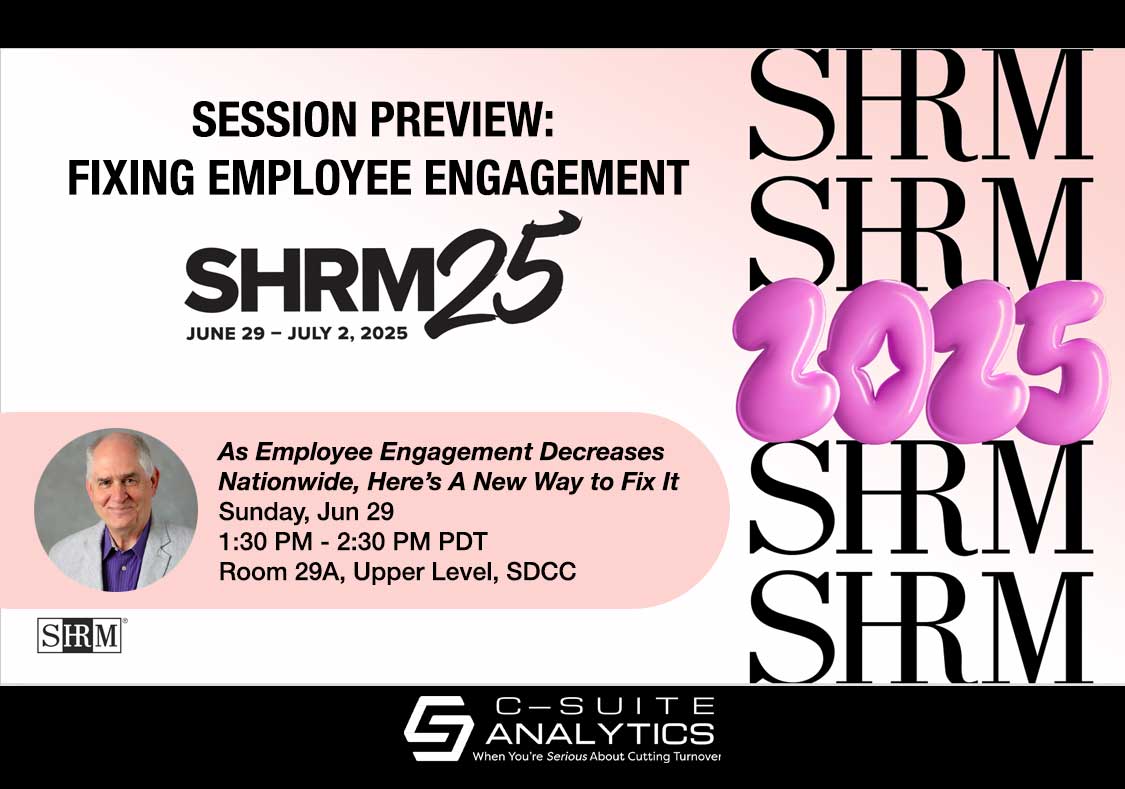To be blunt, employee engagement is a mess. Gallup says global disengagement costs $8.8 trillion…
Social Awareness Has Led to Hiring More Black Workers. How Do We Keep Them?

Any executive with one grey hair, whether in HR or operations, has lived through the shift from when hiring minorities and progressing them into advanced roles was initially about affirmative action to where it is now about diversity and inclusion. But those are just industry terms, media terms, buzzwords…because providing a fair and equal path to promotion is just the right thing to do. For every employee.
Now comes the best and most comprehensive study on how U.S. companies are doing, specifically with retaining and advancing Black workers. And the outcome says we have work to do. The study was conducted by McKinsey with associated partners, studying the progress patterns of over four million employees. Four million employees. First some data:
- Half of Black workers say they receive little or no support to advance their careers, more than the 40% who say the same from other groups…so we are coming up short all the way around.
- Just 29% of Black employees believe promotions are merit-based
- 48% of Blacks believe their race alone makes it harder to achieve their promotion goals, nearly twice as many for other minority groups; or said another way, about half of all Black employees begin work each day believing the promotion game is not fair for them based on the color of their skin.
And here’s a stunner. McKinsey researchers calculate it would take nearly a century for every level of the corporate pyramid to mirror the Black share of the total population. “But by tackling key barriers such as higher attrition and lower odds for career advancement among Black workers, companies could reach that milestone in 25 years.” That number of years is stated optimistically, telling us just how far behind we are. You can read the Wall Street Journal’s report about the McKinsey study here:
All of this data makes clear that employee retention and employee satisfaction among our nation’s Black employees is a very long way from acceptable.
The report goes on to describe current “solutions” including anti-bias training for managers, requiring “racially diverse slates” for promotion consideration, and diverse hiring panels. Some companies are establishing hiring and promotion goals, reflecting back to the era when HR professionals were more fearful of federal government compliance enforcement. OneTen is mentioned as well, a start-up coalition of 30 major organizations pledged to creating one million jobs in the next decade for Black Americans without a college degree that will help them to train for, find, and retain jobs at these institutions.
Each of these ideas represent true good faith efforts but are obviously not enough. What is missing here is holding supervisors accountable for developing and retaining their teams, including their Black employees. Assuming every Black employee is commuting to work each day with the identical concerns about work is no more valid than assuming white employees do the same. Productive, two-way communication about needs and worries best happen between employees and their supervisors, and for those employees their supervisor is the one person…and only person…who learns their strengths and their interests each day.
The lens through which I read this report was (1) big and important problem here, (2) being addressed by more one-size-fits-all programs, and (3) where is the role of supervisors in the solution who happen to be the most important company representative for each of these Black employees?
It’s not that the stated solutions aren’t helpful because they certainly are. It’s just that the absence of supervisors taking the lead role is wasting the most valuable solution resource available to us.
My mind then races toward what we refer to here as Q2, the second Stay Interview question which is “What are you learning here?”. We train leaders on all levels to ask this question regardless if their employee is in her fifth week or fifth year, acknowledging their responses will be different. A new hire will tell you what they’ve learned and where the gaps are for them to excel in their new jobs. A veteran employee might say “I’m learning nothing and just want to do my job and go home” which is very OK. But another veteran employee might say “I’m bored”, or “I want to learn this skill, or “I want to advance to this job”.
When working with supervisors on all levels, we’ve learned that much of career coaching isn’t that hard. One important lesson is whether to position the discussion regarding skills versus positions. Most employees want to learn more and organizations have ample resources to teach them via internal courses, tuition reimbursement, and even more importantly matching those employees with someone who will meet with them on a schedule and teach them the skill they want to learn. Building development around positions, though, requires that those positions become available…and also establishes a win/lose proposition for the employee.
Years ago the Lominger group published a landmark study that established how employees learn best with a very clear outcome. The study considered three leading ways which were (1) feedback & coaching, (2) coursework, and (3) on-the-job application. Which do you think was most effective? On-the-job application. Least effective? Coursework.
My addition to the solutions included in the McKinsey study would include the following:
- Train all leaders, everywhere, to conduct Stay Interviews so those leaders can both build trust with their individual employees and also learn what is important to them, both for retention and engagement.
- Include in that Stay Interview training role plays for how to manage each employee’s response to Q2, What are you learning here? And this role-play training is standard for each Stay Interview program we teach for client companies.
- Hold those leaders accountable to goals for both retaining and engaging their teams, including every employee on their teams.
- Provide extra focus on employees from any group whose retention, engagement, and advancement appear to be for reasons beyond their performance, including Black employees.
At some point we must all figuratively hold hands and agree that how long employees stay and how much they give of themselves to their jobs is about relationships. It cannot just be about programs. We humans come fully loaded with emotions before logic, and our emotional needs must be addressed…especially if we believe the deck is stacked against us from day one. And no one, no executive/no mentor/no colleague will ever have as much influence on each employee that her boss.
Dick Finnegan is SHRM’s top-selling author and top-rated webcast presenter. Please email your comments to DFinnegan@C-SuiteAnalytics.com. Contact Dick to discuss how we can help you retain your valuable employees. You are also welcome to forward this blog to anyone you believe would find it helpful.



